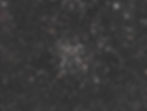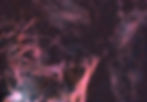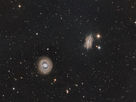M38 - The Starfish Cluster Astrophotography
- Antoine & Dalia Grelin
- May 14
- 4 min read
Messier 38 is an open cluster in the constellation Auriga, and lies in a region of the sky rich in Hydrogen Alpha.
Object Designation: M38, NGC 1912
Also Known As: The Starfish Cluster
Constellation: Auriga
Object Type: Open Cluster
Distance: 3,480 light-years away
Magnitude: 7.4
Discovery: Before 1654 by Giovanni Batista Hodierna
M38 lies very close to two other open clusters, Messier 36 and Messier 37. At a magnitude of 7.4, it can be spotted with binoculars or any small telescope although it is the faintest of the three objects. Messier 38 is also known as the "Starfish Cluster" as it may look like a starfish when photographed. It is a little bit difficult to make out, but it indeed makes sense.
In the northern hemisphere, Messier 38 is best observed and photographed in the Winter months.
Messier 38 Astrophotography with a Monochrome Camera in RGB-HA
March 2025
I photographed Messier 38 in RGB+HA because I knew that a lot of Hydrogen Alpha gas was present in and around the cluster, as seen in both sky surveys and other images of the target online.
I spent a total of 13 hours capturing this picture, which is enough from a Bortle 2 site although I could probably have gone up to 20 to make it cleaner.
I captured Messier 38 in Winter of 2024 but didn't process it until March of 2025. This was taken with my QHY600M monochrome camera from Utah Desert Observatories under Bortle 2 skies. I used the R, G, and B filters for about 3 hours just for the stars, and spent the other 10 hours on the Hydrogen Alpha!
Click the picture to see it in full resolution!
Learn how to process your data like this with our PixInsight processing guides.
GEAR USED:
Camera: QHY600M
Telescope: Stellarvue SVX130
Mount: 10Micron GM1000 HPS
Accessories: Moonlite Nitecrawler focuser / Pegasus Astro Ultimate Powerbox
Processing: Pixinsight with RC-Astro plugins, final touches in Skylum Luminar Neo
ACQUISITION DETAILS:
Total Exposure Time: 13 hours
Exposure Time per frame: 10 minutes
Filters: Chroma 3nm RGB+HA
Gain: 56
Messier 38 Astrophotography with a Monochrome Camera in RGB-HA
Winter 2019
We imaged M38 as a secondary target after having spent three hours photographing the Crescent Nebula. The moon was up and we decided to stop our imaging workflow on the Crescent and grab a small star cluster before packing up and going home.
We only spent one hour on this target, as we didn't want to image for too long after the moon was up. Below you can see our result!

GEAR USED:
Camera: ZWO ASI 1600mm Pro Mono
Telescope: 8" Newtonian
Mount: Equatorial Motorized Mount
Guiding: ZWO ASI 290MM Mini
Acquisition: ZWO ASIAIR
Processing: Pixinsight
ACQUISITION DETAILS:
Total Exposure Time: 1 hour
Exposure Time per frame: 30 seconds
Filters: L (30 minutes) / R (10 minutes) / G (10 minutes) / B (10 minutes)
Gain: 75
How to Find Messier 38

Messier 38 is best captured during the Winter months in the Northern Hemisphere, being at its peak visibility from December to February.
To find it, first locate the bright star Capella in the constellation Auriga, which looks very bright in the northern winter sky. From Capella, look southwest toward the center of Auriga’s pentagon shape. M38 lies within the same region as two other Messier clusters, M36 (The Pinwheel Cluster) and M37 (The Salt and Pepper Cluster), forming a trio of beautiful open clusters. M38 is the most northwestern of the three. Scanning the area south of Capella with binoculars is a good idea as you are very likely to stumble upon the cluster, or its two neighbors. IC 405, the Flaming Star Nebula, is also very close to Messier 38.
M38 is located about 3,400 light-years from Earth and appears as a loose, irregular group of stars through binoculars. If you observe it using a small telescope, it will have a cross-like pattern of stars.
Learn Astrophotography with the Galactic Course
Want to learn how to capture deep sky objects, the Milky Way, and more? Join the Galactic Course to have access to all our astrophotography courses, as well as all our processing guides!
Get courses and processing tutorials individually, or sign up for a bundle to get access to it all!
Processing 38
Processing Messier 38 was a bit more difficult than I thought. At first, I thought that the RGB+HA combination with HA as a background would be as easy as the Double Cluster in Perseus, but no. As you can see below, the HA is very strong in many parts of the background, but it doesn't fully covers it. The key then is to use masks to separate just the HA regions from the background darkness and use Curves to make sure the two are very distinct and separate.

After that, stars can be added safely and reduced in size so that the final result doesn't look too messy. It still doesn't look 100% to my liking, but I kept the masters so that I can go back to it in the future!
As for the processing, you can learn how to process your images the same way I do by getting our guides HERE.
Final Thoughts
The Messier 38 cluster is a nice looking open cluster especially if you spend enough time with an HA filter to get all that colorful gas in the background. Processing the data can quickly get messy, but if done right, the end result will look clean and impressive.
M38 is a fun Winter target if you own a monochrome camera, although a similar result would likely be possible with an OSC camera, no filters, and very dark skies.
Have you captured M38? Attach your image in the comments and let us know what equipment you used!
Clear Skies,
Galactic Hunter
















